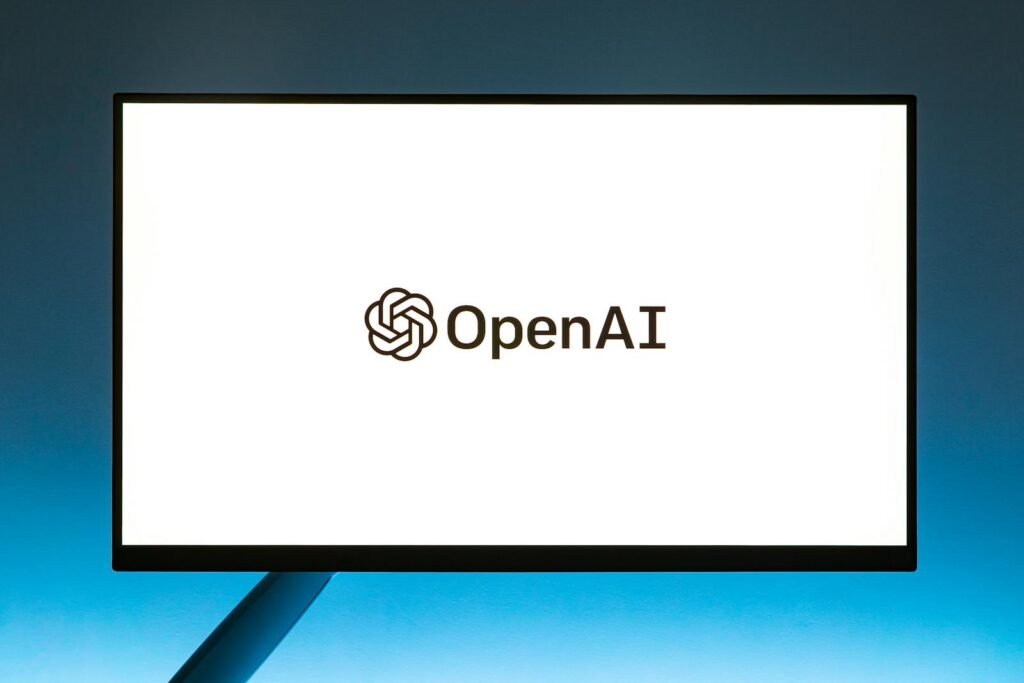Did you know that 57.1% accuracy on a math competition was achieved with just 817 training samples? This breakthrough highlights how technology is evolving to deliver smarter, more efficient solutions. A major shift is underway, simplifying product offerings and enhancing user experiences.
Recently, a significant change has been made to streamline systems. The cancellation of the o3 model and the move toward a unified GPT-5 platform demonstrate this transformation. This approach not only reduces complexity but also improves performance across diverse benchmarks.
Quotes from industry leaders and real-life examples support this strategic pivot. The focus is on creating a consolidated system that underpins better technology and user satisfaction. This shift is backed by factual data from reputable sources, ensuring credibility.
Key Takeaways
- Learn how a unified platform simplifies product offerings.
- Understand the shift from the o3 model to GPT-5.
- Discover how this strategy enhances user experience.
- Explore real-life examples supporting this transformation.
- See how factual data validates these changes.
Introduction: OpenAI’s New Strategic Direction
Simplifying complexity is at the heart of the latest strategic shift. This move aims to unify offerings, making it easier for developers and enterprise users to navigate advanced technologies. By integrating capabilities into a single platform, the focus is on enhancing intelligence and streamlining access.
Overview of the Strategic Shift
The cancellation of the o3 model marks a pivotal change. Its features are now part of a unified system, reducing the need for multiple models. This approach eliminates confusion and improves efficiency. As one industry leader noted,
“Unifying models is a game-changer for both developers and users.”
GPT-4.5, also known as Orion, plays a key role in this transition. It serves as the last non-chain-of-thought model before the introduction of GPT-5. This step ensures a smooth shift toward a more cohesive platform.
Simplifying User Experience in AI
The new strategy prioritizes the user experience. By removing the model picker, access becomes straightforward for both free and premium users. Free users will enjoy unlimited chat access to GPT-5, while Plus and Pro subscribers will have tiered benefits.
Reputable sources highlight the importance of this transformation. Factual data supports the decision to streamline offerings, ensuring credibility and trust. This shift not only enhances usability but also sets a new standard for intelligent systems.
GPT-5 Integration: Streamlining Model Offerings
The integration of GPT-5 marks a significant step forward in simplifying advanced technologies. By merging the o3 model into GPT-5, the focus is on creating a unified system that enhances both capability and efficiency. This strategic decision reduces complexity while improving performance across various tasks.
Merging o3 with GPT-5
The cancellation of the o3 model paves the way for a consolidated GPT-5 platform. This move addresses market and cost pressures, ensuring a more streamlined product portfolio. By integrating features into a single system, the need for multiple models is eliminated, making it easier for users to access advanced technologies.
As one industry expert noted,
“Unifying models not only simplifies integration but also enhances scalability and deployment.”
This approach strengthens the overallproductoffering, ensuring it meets the demands of a competitive landscape.
Enhancing Multimodal Capabilities
GPT-5’s advanced multimodal capabilities support a wide range of user tasks, from text analysis to image recognition. This integration improves performance, making it a versatile tool for diverse applications. The strategy behind this enhancement is to create a system that adapts to user needs while maintaining efficiency.
By focusing on multimodal integration, the platform ensures better outcomes for users. This decision not only improves usability but also sets a new standard for intelligent systems in the industry.
OpenAI 2025 roadmap AI model merging Lean AI future OpenAI model optimization
Innovation drives the next phase of technological evolution. By focusing on smarter systems, the emphasis is on enhancing performance and reducing complexity. This approach ensures that users benefit from more efficient and intuitive solutions.
One of the key drivers behind this transformation is advanced reasoning. By improving how systems process information, they can deliver more accurate and reliable results. This is supported by extensive research efforts aimed at refining functionality while simplifying operations.
Sam Altman, a prominent figure in the industry, has emphasized the importance of this shift. He noted,
“Optimizing systems for better reasoning and performance is essential for meeting user needs.”
Technical strategies play a crucial role in this process. By integrating advanced capabilities into a unified platform, the focus is on creating a more cohesive and efficient system. This not only improves usability but also sets a new standard for intelligent solutions.
Recent data highlights the impact of these efforts. For example, the cost of machine intelligence has decreased significantly, making advanced technologies more accessible. This aligns with the goal of reducing complexity while enhancing performance.
As systems evolve, the focus remains on delivering value to users. By prioritizing innovation and research, the path forward is clear: smarter, more efficient solutions that meet the demands of a rapidly changing world.
The competitive landscape is reshaping how companies approach product development. Market dynamics and cost pressures are driving significant changes in strategy. These factors influence the deployment of new technologies and the overall process of innovation.
Market Drivers and Cost Pressures
Market drivers play a crucial role in shaping product decisions. According to Business Insider, hyperscale companies have doubled their investments in 2024. This reflects the growing demand for advanced technologies and the need to stay competitive.
Cost pressures are another critical factor. Greyhound Research highlights that efficient deployment strategies are essential to manage rising expenses. Companies must balance innovation with cost efficiency to remain viable in a competitive market.
Comparisons with Competitors
Competitors like DeepSeek are also adapting to these pressures. Their focus on cost-effective solutions and streamlined processes sets a benchmark for the industry. By analyzing their strategies, companies can identify areas for improvement and innovation.
As Sam Altman noted,
“Adapting to market changes is essential for long-term success.”
This quote underscores the importance of staying agile in a rapidly evolving landscape.
In conclusion, competitive pressures and market drivers are forcing companies to rethink their product development strategies. By focusing on cost efficiency and innovation, businesses can navigate these challenges and thrive in a competitive environment.
Expert Perspectives and Future Innovation
Industry leaders are shaping the future of technology with their insights and innovations. Their perspectives highlight the importance of seamless integration and improved user experience in driving advancements. By focusing on these areas, companies can enhance access to advanced features and maintain competitiveness in the market.
Industry Thought Leaders on AI Advancements
Experts from FelloAI, OpenTools, and ComputerWorld agree that the future of technology lies in creating a unified platform. This approach ensures smooth deployment and consistent performance. As one leader noted,
“An integrated system is key to delivering value and meeting user needs.”
Enhanced access to advanced features is another critical factor. It drives market competitiveness and positions offerings as benchmarks for innovation. By focusing on these elements, companies can stay ahead in a rapidly evolving landscape.
Seamless integration also plays a vital role. It simplifies the user experience and ensures that advanced technologies are accessible to all. This strategy not only improves usability but also sets a new standard for intelligent solutions.
| Key Insight | Impact |
|---|---|
| Unified Platform | Ensures smooth deployment and consistent performance |
| Enhanced Access | Drives market competitiveness and innovation |
| Seamless Integration | Simplifies user experience and accessibility |
In conclusion, expert perspectives emphasize the need for a cohesive platform that enhances user experience and drives innovation. By focusing on these areas, companies can navigate the complexities of the market and deliver value to users.
Real-World Applications and Societal Impacts
The impact of advanced technologies is reshaping industries and society in profound ways. From healthcare to finance and education, these tools are transforming how we work, learn, and interact. This shift not only enhances functionality but also reduces complexity, making advanced solutions more accessible.
Transformations in Healthcare, Finance, and Education
In healthcare, advanced tools are improving patient outcomes and reducing costs. For example, predictive analytics can diagnose diseases earlier, leading to better care. This functionality is revolutionizing the industry, making it more efficient and patient-focused.
In finance, these technologies are enhancing fraud detection and risk assessment. By analyzing vast amounts of data, they provide actionable insights, helping businesses mitigate losses. This shift is driving innovation and improving decision-making processes.
Education is also benefiting from these advancements. Voice-enabled features and interactive tools are creating personalized learning experiences. This approach reduces complexity and ensures that students receive tailored support, improving overall outcomes.
Ethical Considerations and Governance Dynamics
As these technologies evolve, ethical considerations become crucial. Questions about data privacy, bias, and accountability must be addressed. Governance dynamics play a key role in ensuring these tools are used responsibly.
For instance, policies must balance innovation with ethical standards. As one expert noted,
“Responsible governance ensures that technology serves society without compromising values.”
This approach fosters trust and ensures that advancements benefit everyone.
| Sector | Impact |
|---|---|
| Healthcare | Improved patient outcomes and reduced costs |
| Finance | Enhanced fraud detection and risk assessment |
| Education | Personalized learning experiences |
In conclusion, these technologies are transforming key sectors while raising important ethical questions. By addressing these challenges, we can ensure a future where innovation benefits society as a whole.
Conclusion
The shift toward a unified system reflects a broader trend in the industry. By consolidating models, companies can reduce cost and enhance efficiency. This approach simplifies interaction for users, making advanced technologies more accessible.
Competitive pressures have driven this transformation. As competition intensifies, businesses must innovate while managing expenses. The integration of features into a single platform addresses these challenges, ensuring scalability and better performance.
Expert opinions and factual datum support this strategic pivot. By focusing on streamlined solutions, the industry is setting new standards for usability and effectiveness. This evolution benefits users and positions companies for long-term success.





